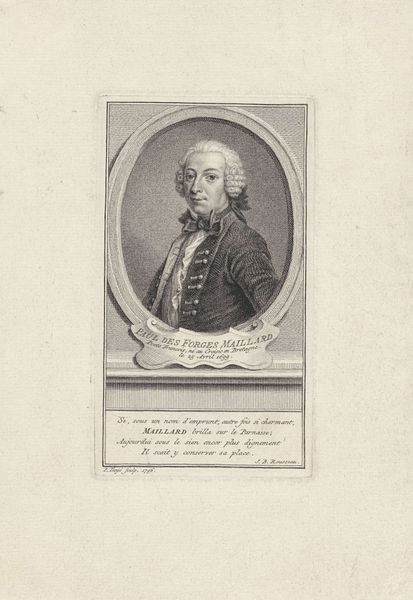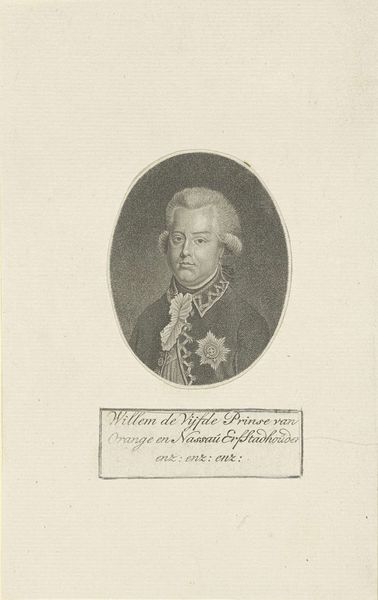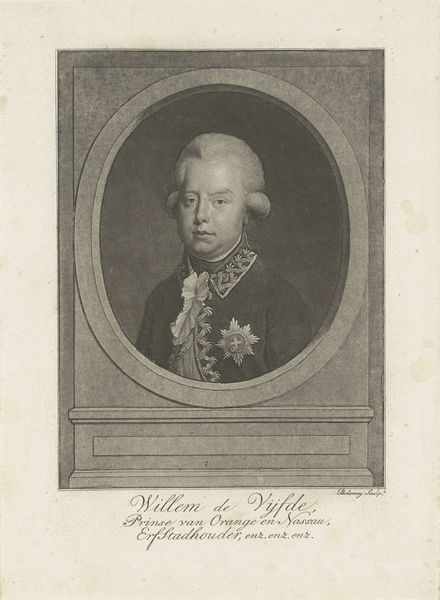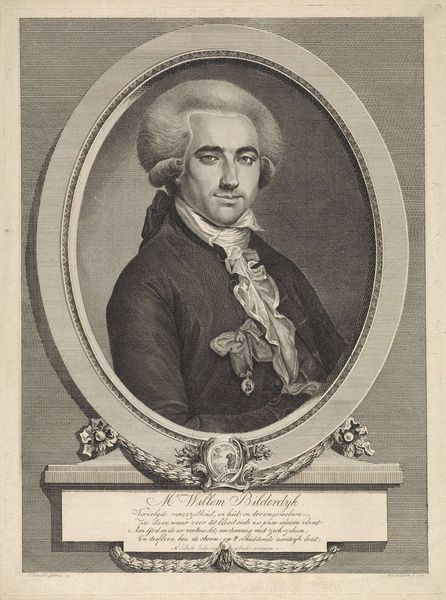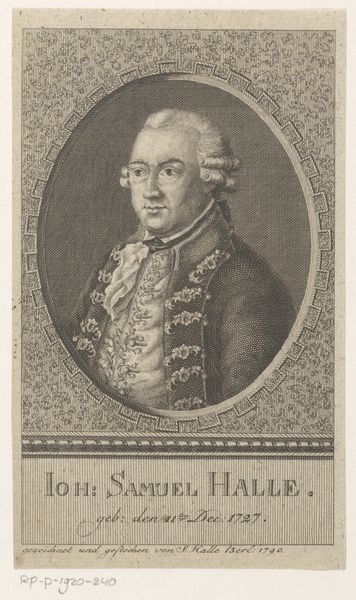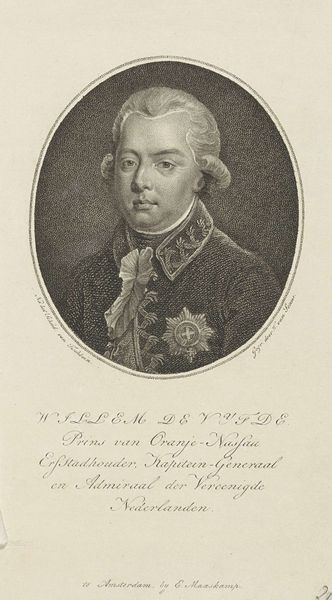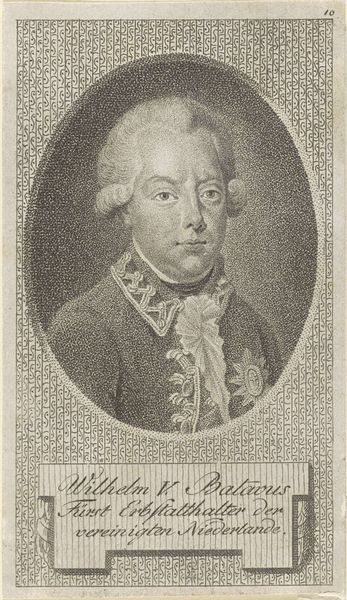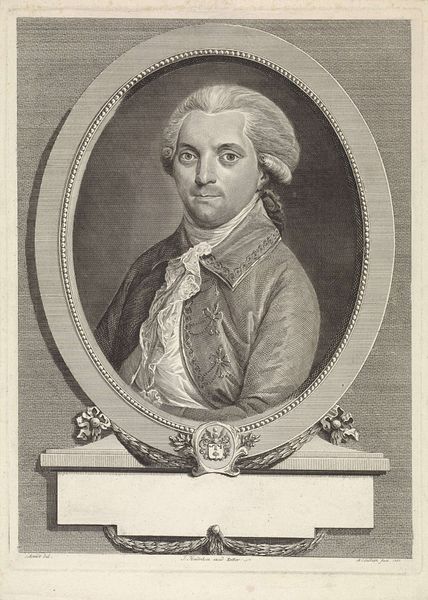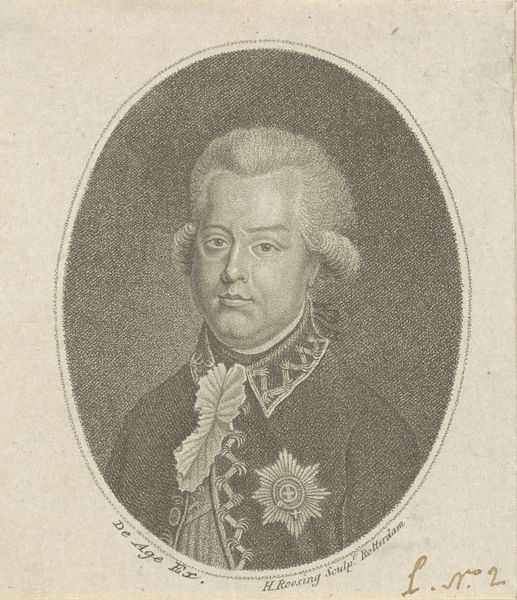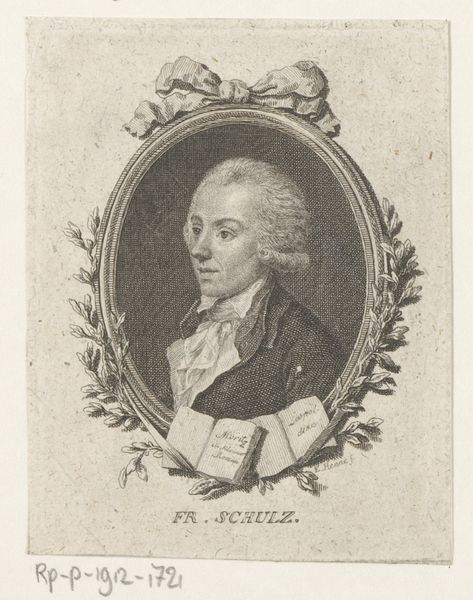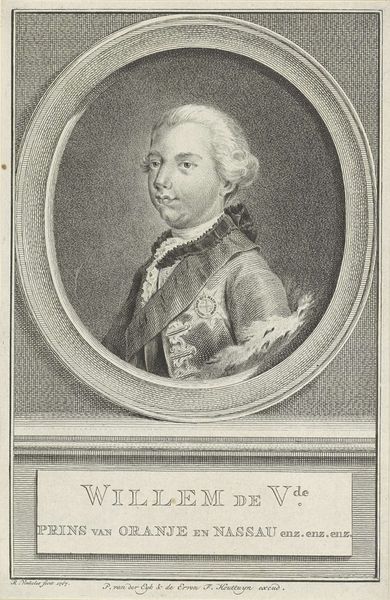
Portret van Francesco Melzi d'Eril, vice-president van de Italiaanse Republiek 1802
0:00
0:00
engraving
#
portrait
#
neoclacissism
#
academic-art
#
engraving
Dimensions: height 210 mm, width 128 mm
Copyright: Rijks Museum: Open Domain
Curator: This engraving, made in 1802 by Giovanni Boggi, depicts Francesco Melzi d'Eril, who served as the Vice-President of the Italian Republic. Editor: There's a striking stillness about this image; his gaze feels quite serious, and that ornate uniform seems to weigh him down, metaphorically at least. Curator: Indeed. Its style aligns with Neoclassicism, emerging in a revolutionary period, in this case exemplified by the shifting politics in Italy at the beginning of the 19th century. These state-sponsored images were key in promoting values of order, and civic virtue. Editor: Interesting. How might this portrait function within the context of Napoleonic influence and the construction of Italian identity? The formal style almost seems designed to legitimize a nascent, and, let’s remember, somewhat unstable republic. Curator: Exactly. Note the framing, it situates Melzi as a respectable statesman. Think of the politics of portraiture: its engagement with image and authority, and how engravings like this are instruments to power at a moment of political transition and state building. The very fact it’s an engraving also signifies its intended dissemination across a wide public. Editor: Do you see any evidence in the artwork itself that signals any subversion or commentary regarding the upheavals during the Napoleonic era or his role within that context? Curator: I don't think so. Here the figure embodies an idealized role that emphasizes decorum. If anything, its strength is its role within the propaganda machinery, working to ensure social order and control the representation of the elite in the republic. Editor: Well, its rigid formality makes me a little uneasy still. Curator: I find it useful to analyze it in view of its political utility, showing how art plays its part in maintaining power structures in critical moments of transformation. Editor: Absolutely. It really is a study in how representation works to shape not just image, but perceived legitimacy.
Comments
No comments
Be the first to comment and join the conversation on the ultimate creative platform.
